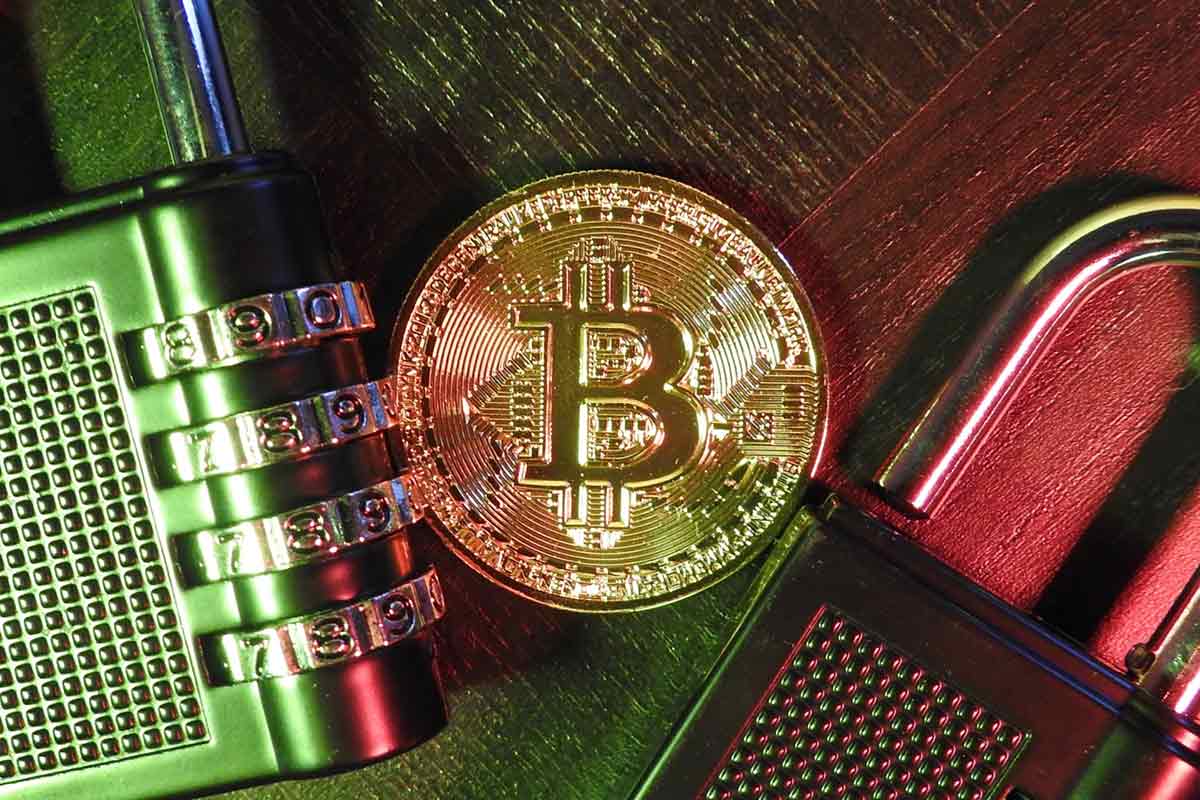Newcomers diving into the cryptosphere will first require cryptocurrency wallets as a gateway to safely navigate the blockchain sea. Fortunately, holders have various wallet options for storing and trading digital assets.
As a whole, crypto wallets are the backbone of the industry, ensuring users safeguard their digital assets while enabling holders to send, receive, and trade their cryptocurrencies.

Cryptocurrency wallets
Much like physical wallets are used for safeguarding personal belongings like cash and cards from theft or damage, crypto wallets that store digital assets are soon poised to play a crucial role as the stepping stone to Web3 adoption. It is important to note here that a crypto wallet stores the private keys that serve as a password and safe deposit box that grants access to one’s holdings that live on the blockchain. Therefore, contrary to popular belief, crypto wallets do not directly “store” a user’s cryptocurrencies but rather prove one’s ownership of digital assets and allow for transactions.
In contrast to a traditional safe deposit box, where the bank acts as a middleman and approves transactions on the user’s behalf. Cryptocurrency holders who manage their private keys and conduct transactions through non-custodial wallets or self-custody wallets — i.e., wallets not maintained by exchanges or other third parties — effectively become their banks. This is why the adage “not your keys, not your coins” is widely used in the cryptocurrency community. It entails that users must have sole custody of the private keys connected to their funds. This gives them complete control over how they use their crypto without relying on a third-party actor.
Cold vs. Hot Wallets
Before delving into the types of wallets, it is essential to understand the two distinct wallet categories: “hot” and “cold” wallets.
Hot Wallets
In its simplest form, any cryptocurrency wallet linked to the internet refers to as a hot wallet. They’re typically easy to use and geared toward novice traders looking to enter the space. Hot wallets’ 24/7 connectivity to the internet makes them highly convenient, but this very feature makes them more vulnerable to hacks.
Cold Wallets
As you may have guessed, cold cryptocurrency wallets encompass any wallet that remains offline, away from the internet. A safer alternative to hot wallets is keeping digital assets in cold storage. This is because their offline nature makes them impervious to hacking.
Despite the advantages and disadvantages of each storage option, the choice depends on the users’ needs. For instance:
- A hot wallet is the better option for a trader looking to buy and sell frequently, as accessibility will be crucial.
- However, if a user intends to keep a considerable quantity of crypto assets for the long haul while prioritizing security over convenience, investing in a cold wallet may be a good option.
Types of Cryptocurrency Wallets
Now that we have understood the difference between online and offline methods to store one’s crypto, understanding the difference between custodial cryptocurrency wallets and non-custodial cryptocurrency wallets is important. The cryptocurrency industry gives its users the freedom to choose whether they would prefer to have total self-custody of their funds or take the more conventional approach of having a third party manage their funds.
Custodial Wallets
These wallets are run by centralized cryptocurrency exchanges like Binance, Coinbase, and many others. They function similarly to a traditional bank account. The company or exchange, in this case, is in charge of managing and safeguarding a user’s private keys. This places less pressure on a user to protect their account. However, the drawback is that if the company were to be hacked or become insolvent, there would be no way of retrieving the funds.
Non-Custodial Wallets
These wallets come in both “hot” or “cold” storage options. Crypto holders using non-custodial wallets adhere to the libertarian ideal of self-ownership as they have sole control over their private keys and funds.
Online-based non-custodial cryptocurrency wallets include popular platforms like MetaMask, Trust Wallet, and Exodus, to name a few. Their offline counterparts are hardware wallets such as a Ledger or Trezor or old-school methods of storing crypto in paper wallets. Adoption for non-custodial wallets is rising, with major entities championing the idea of self-sovereignty in crypto.
.@Telegram will build a non-custodial crypto wallet and DEX, CEO Pavel @Durov said. By @realDannyNelson.https://t.co/SvzPax9oKt
— CoinDesk (@CoinDesk) November 30, 2022
Cryptocurrency users should switch to trustless transactions and self-hosted wallets that don’t rely on any single third-party.
Telegram CEO Pavel Durov
The Functionality of Cryptocurrency Wallets
- Blockchain is a public ledger that stores data in units known as “blocks.” These records contain a list of all transactions, balances at each address, and the person in charge of each balance.
- As alluded to above, the name “wallet” is somewhat misleading because crypto wallets do not physically hold cryptocurrencies like a wallet holding cash or cards. They instead hold the private key to a user’s coins, stored on public blockchain networks.
- Each wallet has its own set of unique features. This includes the ability swap between tokens, stake tokens for a fixed return paid to users, and access to dApps (decentralized applications) developed on different networks. The majority of cryptocurrency wallets enable users to send, receive, and store cryptocurrency.
- To send funds, the sender requires the wallet address of the recipient. Find the “send” option in the wallet application and type the wallet address where funds will be sent. The recipient’s address and the blockchain network connected to it must be accurate in this case; otherwise, there will be no way to retrieve the payments. The user can confirm the transaction after choosing the amount to send.
- When users “send” crypto tokens from their mobile or physical device to another user’s device, they sign the transaction and broadcast it to the blockchain network using their private key.
- An address, also referred to as a public key, must be retrieved from the user’s wallet to receive funds. Find the “receive funds” function in the wallet. Once clicked, copy the alphanumeric address or QR code and share it with the person sending you cryptocurrency.
- Subsequently, the transaction will be included in the network to reflect the revised balance in the sender’s and recipient’s addresses.
The Pros and Cons of Using Non-custodial Cryptocurrency Wallets
The Pros
Self-Ownership of Assets
Money kept in a bank account is technically the bank’s property. In contrast, with their private keys, crypto belongs to the user and the user alone.
Censorship Resistance
Considering that a single entity does not govern decentralized cryptocurrencies, users can send money to anyone, at any time, without fretting about third parties interrupting transactions.
The Cons
Complete Responsibility on the User
Without any third-party involvement, this requires accepting full responsibility for any mistakes.
A Learning Curve for Beginners
Purchasing cryptocurrency can be a task in and of itself. Setting up, transferring, and storing assets into a non-custodial wallet requires a fundamental understanding of a novel financial ecosystem.
Setting up a Self-Custody Crypto Wallet
The Steps to Set Up a Crypto Wallet Include the Following
- Download a crypto wallet application: (in the case of hot wallets) or purchase a hardware device (in the case of cold wallets)
- Create an account: Users do not have to disclose personal information to create a non-custodial wallet, unlike a custodial wallet or cryptocurrency exchange.
- Back up the seed phrase — The seed phrase acts as a backup or recovery method in case the device in which the crypto is stored is lost. The seed phrase consists of 12–24 randomly generated words. Since anyone with the seed phrase can access a user’s funds, keeping it secure and locked away is crucial.
The Importance of Self Custody
Custodial cryptocurrency wallets come with dangers comparable to keeping your money in a bank. Fundamentally, users don’t have absolute control over their funds, which is where the risks stem from. The FTX collapse serves as a poignant reminder of the real threat of losing assets entrusted to a third party and the potential security threat that custodial crypto wallets can carry.
FTX is by no means the only platform guilty of misusing or losing user funds However, being one of the largest exchanges, the implosion shook the industry. It brought self-custody to the forefront of the conversation.
Conclusion
Entering the world of cryptocurrencies can be intimidating for newcomers, and acquiring full ownership of their crypto assets can seem difficult. Depending on their investment strategy or risk tolerance, holders have a variety of cryptocurrency wallet options when it comes to storing their digital assets.



















